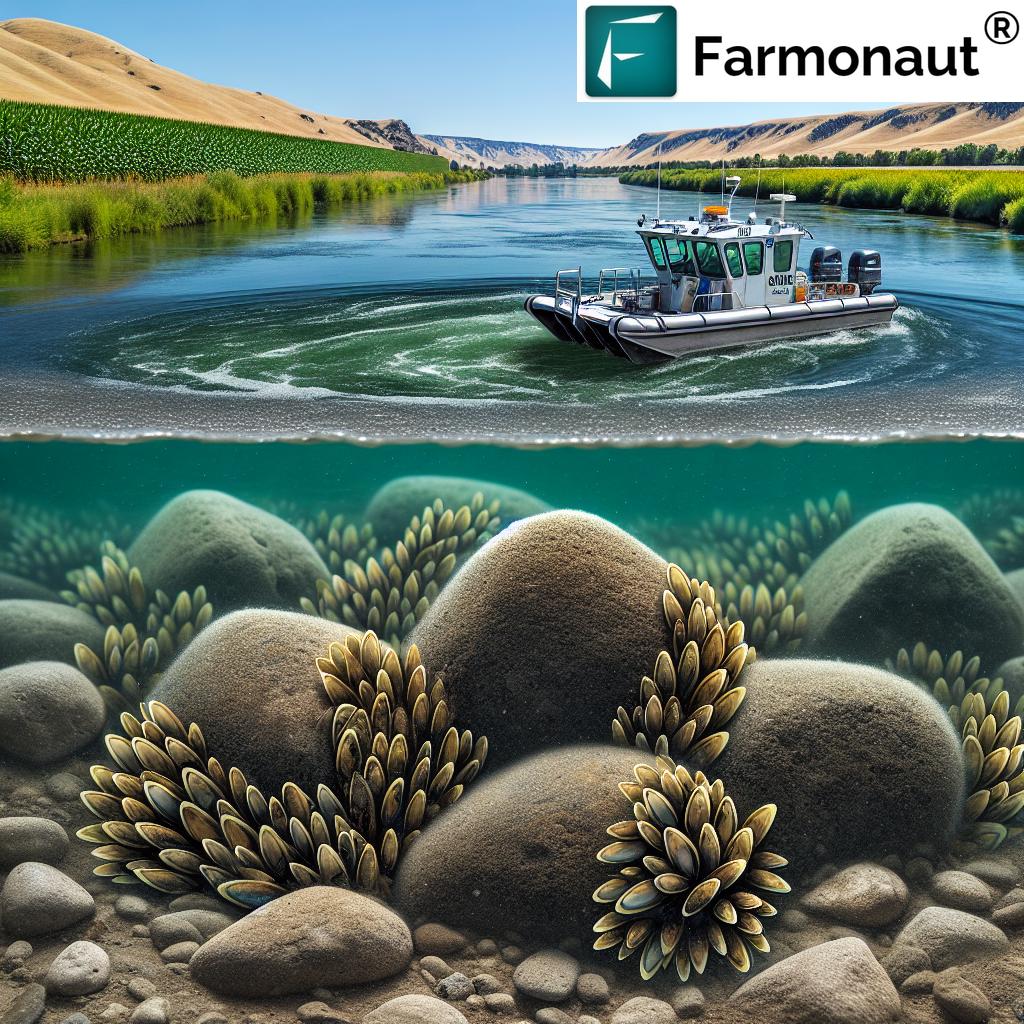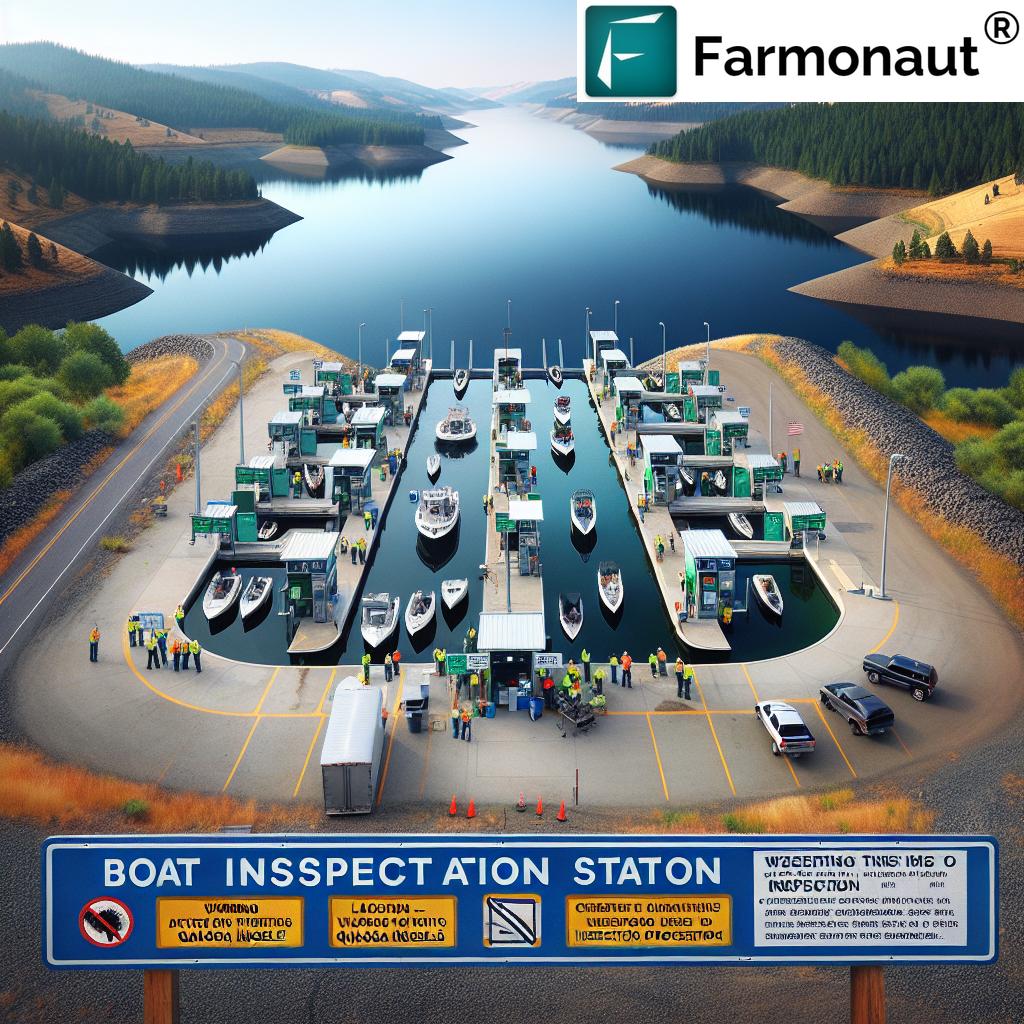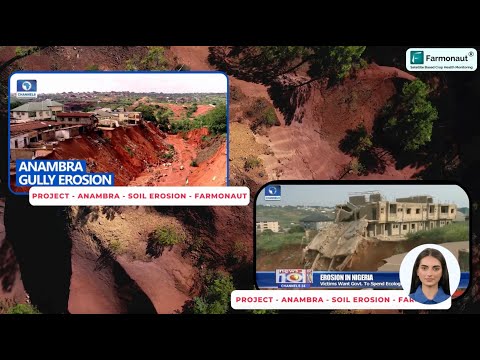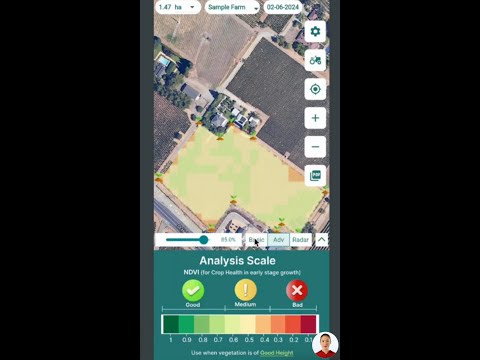Idaho’s Battle Against Quagga Mussels: Protecting Agriculture and Water Resources with Advanced Detection Technology
“Idaho’s battle against quagga mussels involves expanded boat inspections and increased funding to protect $83 billion in annual agricultural production.”
In the heart of the American Northwest, Idaho is waging a critical war against an unlikely but formidable foe: the quagga mussel. This tiny invader, no larger than a fingernail, poses a monumental threat to the state’s vital water resources and agricultural industry. As we delve into this pressing issue, we’ll explore how Idaho is leveraging cutting-edge technology and collaborative efforts to safeguard its environmental and economic future.
The Quagga Mussel Invasion: A Looming Threat to Idaho’s Waters
In September 2023, alarm bells rang across Idaho when quagga mussels were first detected in the mid-Snake River near Twin Falls. This discovery sent shockwaves through the state’s agricultural and environmental sectors, triggering an immediate and aggressive response from the Idaho State Department of Agriculture (ISDA).
Why such concern over a diminutive mollusk? The answer lies in the devastating impact these invasive species have had across North America. From the Great Lakes to the Colorado River, quagga mussels have wreaked havoc on ecosystems, infrastructure, and economies, costing hundreds of millions in damages and control measures.

Idaho’s Proactive Approach to Invasive Species Control
For the past 16 months, we’ve witnessed an unwavering commitment from Idaho to eradicate the quagga mussel population from the Snake River. The ISDA has implemented a series of aggressive treatment efforts, demonstrating the state’s dedication to protecting its water resources and agricultural heritage.
- Initial treatments focused on the Twin Falls Reservoir
- A second round of treatment in fall 2024 expanded to surrounding areas, including Centennial Park
- ISDA Director Chanel Tewalt emphasized the critical nature of these efforts, stating, “We behaved with that treatment as if that’s the last shot we ever get at treating the river.”
This proactive stance underscores Idaho’s understanding of the potential consequences if quagga mussels were to establish a foothold in its waters. The state’s approach to invasive species control in rivers serves as a model for other regions facing similar threats.
Advanced Detection: The Role of Environmental DNA Technology
“Environmental DNA technology detects quagga mussel veligers as small as 0.04 millimeters, aiding Idaho’s invasive species control efforts.”
At the forefront of Idaho’s defense against quagga mussels is the use of cutting-edge environmental DNA technology for detection. This innovative approach allows for the identification of mussel presence at incredibly early stages, even when traditional methods might fail.
Here’s how environmental DNA (eDNA) technology is revolutionizing Idaho’s monitoring efforts:
- Detects genetic material shed by organisms in the water
- Capable of identifying quagga mussel veligers (larvae) as small as 0.04 millimeters
- Provides early warning of mussel presence, allowing for rapid response
- Enhances the efficiency and accuracy of monitoring programs
This advanced detection method is crucial in Idaho’s ongoing battle, as it allows for swift action at the earliest signs of infestation. The technology’s precision aligns perfectly with Director Tewalt’s assertion that “any veliger number is unacceptable.”
Protecting Idaho’s Agricultural Heartland
Idaho’s agriculture is not just an industry; it’s the lifeblood of the state’s economy and culture. The potential impact of quagga mussels on this sector cannot be overstated. As we at Farmonaut understand the importance of agricultural sustainability, we recognize the critical nature of Idaho’s efforts in protecting agriculture and water resources.
The state’s reliance on irrigation makes it particularly vulnerable to the threats posed by quagga mussels. These invasive mollusks can:
- Clog irrigation systems, reducing water flow to crops
- Increase maintenance costs for agricultural infrastructure
- Alter aquatic ecosystems, affecting water quality for irrigation
- Potentially impact crop yields and farm productivity
Idaho’s proactive measures in combating this invasion are essential for safeguarding its $83 billion annual agricultural production. The state’s commitment to irrigation system protection from mussels is a testament to its understanding of the interconnectedness between water resources and agricultural success.
Expanded Boat Inspections: A Frontline Defense
One of the primary vectors for quagga mussel spread is recreational boating. Recognizing this threat, Idaho has significantly ramped up its boat inspection for invasive species program. This enhanced vigilance is crucial in preventing new introductions of quagga mussels into Idaho’s waters.
Key aspects of Idaho’s expanded boat inspection efforts include:
- Increased funding for inspection stations
- Extended hours of operation at key entry points
- Enhanced training for inspectors to identify high-risk vessels
- Public education campaigns to raise awareness among boaters
These measures are particularly important given the risk posed by out-of-state boaters who may unknowingly transport mussels from infested water bodies. The ISDA’s focus on monitoring out-of-state traffic is a critical component of Idaho’s defense strategy.

The Economic Impact of Invasive Mussels: Lessons from Other States
To fully appreciate the urgency of Idaho’s efforts, we must consider the economic impact of invasive mussels in other regions. States like Michigan and areas surrounding the Great Lakes have experienced the devastating consequences of established quagga mussel populations:
- Hundreds of millions of dollars in infrastructure damage
- Significant impacts on power facilities, including the Hoover Dam
- Increased maintenance costs for water treatment and distribution systems
- Negative effects on fishing and tourism industries
These sobering examples serve as a stark warning for Idaho, reinforcing the importance of its proactive approach. By investing in prevention and early intervention, Idaho aims to avoid the costly scenarios faced by other states.
Veliger Eradication: The Key to Breaking the Cycle
At the heart of Idaho’s strategy is the focus on veliger eradication methods. Veligers, the larval stage of quagga mussels, are particularly challenging to detect and eliminate due to their microscopic size. However, targeting this life stage is crucial for breaking the reproductive cycle and preventing established populations.
Idaho’s approach to veliger eradication includes:
- Targeted treatments in infested areas
- Continuous monitoring using eDNA technology
- Research into innovative eradication methods
- Collaboration with scientific institutions to improve treatment efficacy
The state’s commitment to eradicating veligers underscores the understanding that prevention is far more cost-effective than long-term management of established populations.
Twin Falls Reservoir: Ground Zero in the Mussel Battle
The Twin Falls Reservoir has become the focal point of Idaho’s quagga mussel eradication efforts. As the site of the initial detection, this water body has seen intensive Twin Falls reservoir treatment aimed at eliminating the invasive species before they can spread further.
Key aspects of the Twin Falls treatment program include:
- Multiple rounds of chemical treatments
- Intensive monitoring for mussel presence
- Coordination with local stakeholders to minimize impact on water users
- Ongoing assessment of treatment efficacy
The success of efforts at Twin Falls Reservoir will be crucial in determining the overall trajectory of Idaho’s battle against quagga mussels. It serves as a test case for the state’s ability to respond effectively to this invasive threat.
Idaho’s Water Conservation Efforts in the Face of Invasion
The quagga mussel threat has brought renewed focus to Idaho water conservation efforts. Recognizing that protecting water resources goes hand in hand with combating invasive species, the state has implemented a range of conservation measures:
- Enhanced water use efficiency in agriculture
- Promotion of drought-resistant crop varieties
- Investment in water-saving technologies for irrigation
- Public awareness campaigns on water conservation
These efforts not only support the fight against quagga mussels but also contribute to the long-term sustainability of Idaho’s water resources. By reducing water waste and improving efficiency, the state is better positioned to withstand the potential impacts of invasive species on its water systems.
Collaborative Efforts: Uniting Against a Common Threat
Idaho’s battle against quagga mussels is not fought in isolation. The state has fostered collaborative relationships with various stakeholders to strengthen its defense:
- Partnerships with neighboring states for coordinated prevention efforts
- Collaboration with federal agencies for research and funding
- Engagement with local communities and water user groups
- Cooperation with academic institutions for scientific expertise
These collaborative efforts amplify Idaho’s capacity to respond to the quagga mussel threat, bringing together diverse resources and expertise in a united front against this invasive species.
The Role of Technology in Agricultural Protection
As we at Farmonaut understand the importance of technological innovation in agriculture, we recognize the critical role that advanced technologies play in Idaho’s efforts to protect its agricultural sector from the quagga mussel threat. While our focus is on satellite-based farm management solutions, we applaud Idaho’s use of cutting-edge tools in this battle.
Some of the key technologies being employed include:
- Environmental DNA detection for early warning
- GIS mapping for tracking mussel spread and treatment areas
- Remote sensing for monitoring water quality changes
- Data analytics for predicting potential infestation sites
These technological applications demonstrate the power of innovation in addressing complex environmental challenges. They provide Idaho with the tools needed to stay ahead of the quagga mussel threat and protect its vital agricultural resources.
Funding the Fight: Investing in Idaho’s Future
The battle against quagga mussels requires significant financial resources. Idaho has recognized this need and has substantially increased funding for its invasive species control programs. This investment reflects the state’s commitment to protecting its water and agricultural resources.
Key areas of increased funding include:
- Enhanced detection and monitoring programs
- Expanded boat inspection stations
- Research into new eradication methods
- Public education and outreach initiatives
By allocating these resources, Idaho is taking a proactive stance in preventing the establishment of quagga mussels, potentially saving millions in future mitigation costs.
Looking Ahead: The Future of Idaho’s Quagga Mussel Battle
As Idaho continues its fight against quagga mussels, the state faces both challenges and opportunities. The coming years will be critical in determining the long-term success of these efforts. Key factors that will shape the future include:
- Ongoing monitoring and early detection capabilities
- Development of new treatment technologies
- Continued public engagement and support
- Adaptive management strategies based on new research
The outcome of this battle will have far-reaching implications not only for Idaho but for the entire Pacific Northwest region. Success in Idaho could provide a blueprint for other states facing similar invasive species threats.
Comparative Analysis: Idaho’s Approach vs. Other Affected States
| State | Estimated Economic Impact ($/year) | Primary Affected Resources | Detection Methods Used | Control Measures Implemented | Funding Allocated for Prevention/Control |
|---|---|---|---|---|---|
| Idaho | Potential $94 million | Irrigation systems, reservoirs | Environmental DNA, visual inspections | Chemical treatments, boat inspections | $3 million (increased) |
| Michigan | $100-800 million | Great Lakes, power plants | Water sampling, visual surveys | Biological controls, infrastructure modifications | $25 million |
| Nevada | $45 million | Lake Mead, water treatment facilities | Microscopy, plankton tows | Chlorination, filtration systems | $12 million |
| California | $200-500 million | Aqueducts, reservoirs | Substrate monitoring, veliger sampling | Watercraft decontamination, public education | $22 million |
This comparative analysis highlights Idaho’s proactive and technologically advanced approach to quagga mussel control. While the potential economic impact for Idaho is significant, the state’s early intervention and use of cutting-edge detection methods position it well to mitigate these costs. The increased funding allocation demonstrates Idaho’s commitment to prevention, which could prove more cost-effective than the reactive measures seen in states with established infestations.
FAQ: Idaho’s Battle Against Quagga Mussels
Q: What are quagga mussels and why are they a threat to Idaho?
A: Quagga mussels are invasive freshwater mollusks that can cause significant damage to ecosystems, infrastructure, and water resources. They threaten Idaho’s agriculture, water systems, and native species.
Q: How does environmental DNA technology help in detecting quagga mussels?
A: Environmental DNA technology can detect genetic material from quagga mussels in water samples, allowing for early detection of their presence even before they are visible to the naked eye.
Q: What measures is Idaho taking to prevent the spread of quagga mussels?
A: Idaho has implemented expanded boat inspections, increased funding for detection and control programs, and is using advanced technologies for early detection and treatment of infested areas.
Q: How can boaters help prevent the spread of quagga mussels?
A: Boaters can help by cleaning, draining, and drying their boats after each use, especially when moving between different water bodies. They should also comply with all inspection requirements when entering Idaho.
Q: What is the economic impact of quagga mussels on affected states?
A: The economic impact can be severe, ranging from tens to hundreds of millions of dollars annually in infrastructure damage, increased maintenance costs, and effects on tourism and recreation.
Conclusion: A United Front Against Aquatic Invaders
Idaho’s battle against quagga mussels is more than just a state issue; it’s a critical fight for the preservation of vital water resources and agricultural sustainability. The state’s proactive approach, leveraging advanced detection technologies and collaborative efforts, sets a powerful example for invasive species management across North America.
As we at Farmonaut continue to support agricultural innovation through our satellite-based solutions, we recognize the importance of these environmental protection efforts. The success of Idaho’s campaign against quagga mussels will have far-reaching implications for water conservation, agricultural productivity, and ecosystem health throughout the region.
By staying vigilant, investing in technology, and fostering cooperation among stakeholders, Idaho is charting a course towards a future where its waters remain free from the grip of these destructive invaders. The battle is far from over, but with continued dedication and innovative approaches, Idaho stands a strong chance of protecting its precious water resources for generations to come.
For more information on our satellite and weather API services, visit our API page or check out our API Developer Docs.







